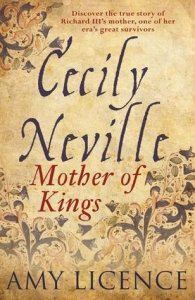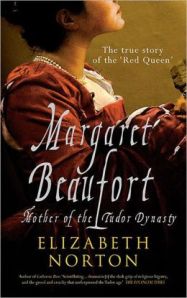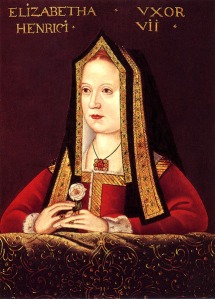Just being truthfully honest, I avoid the War of the Roses like it was the plague! It’s my least favorite era of English history. Enormous egos, unlikeable characters, convoluted plotting, treachery, bloody battles and cousins killing cousins, all in an attempt to take the English throne. However, there are a few appealing women that are of interest such as Cecily’s contemporary Margaret Beaufort and her daughter Margaret of York who were vigorous and effective during the conflict and have great stories. This also includes Cecily Neville, “The Rose of Raby”, mother of King Edward IV and Richard III and great-grandmother of King Henry VIII.
Amy License gives us a very thorough look at the long and fruitful life of Cecily. She has gone over all the sources to glean as much information as possible about her. There are descriptions of ceremonies and castles giving us a taste for what Cecily’s life was like. Cecily was a valuable helpmate for her husband Richard, Duke of York who had vast and rich holdings all over the country. She managed the many properties effectively while producing many children and carrying out her pious observances in the tradition of a wealthy medieval woman.
In a biography like this, the workings of the politics and infighting of the men have a bearing on the woman’s life. License gives us succinct and understandable explanations of these circumstances, giving plausible scenarios for what was happening such as why her husband made a play for the throne of King Henry VI and the role her nephew, Richard, Earl of Warwick had in the conflict. One thing I found interesting was Cecily’s friendship with Margaret of Anjou, wife of Henry VI. Even though their husbands were at odds, they managed to have a common bond.
License gives us an abundance of details about Cecily’s life. I enjoyed the list of bequests from Cecily to her family and servants. She also gives us history and background of Cecily’s children and grandchildren as well as some of her siblings and their descendants. There are some handy family trees in the book and some great pictures of locations and portraits of people relevant to the biography. Cecily lived a long, conflict filled life and this biography does her justice. I highly recommend it.






You must be logged in to post a comment.